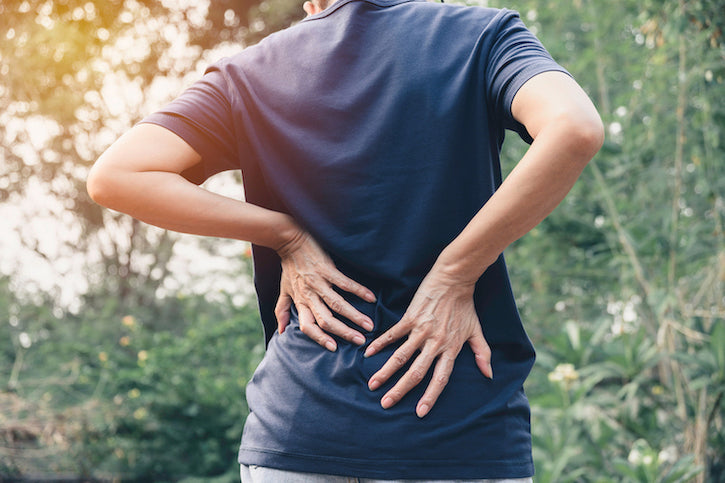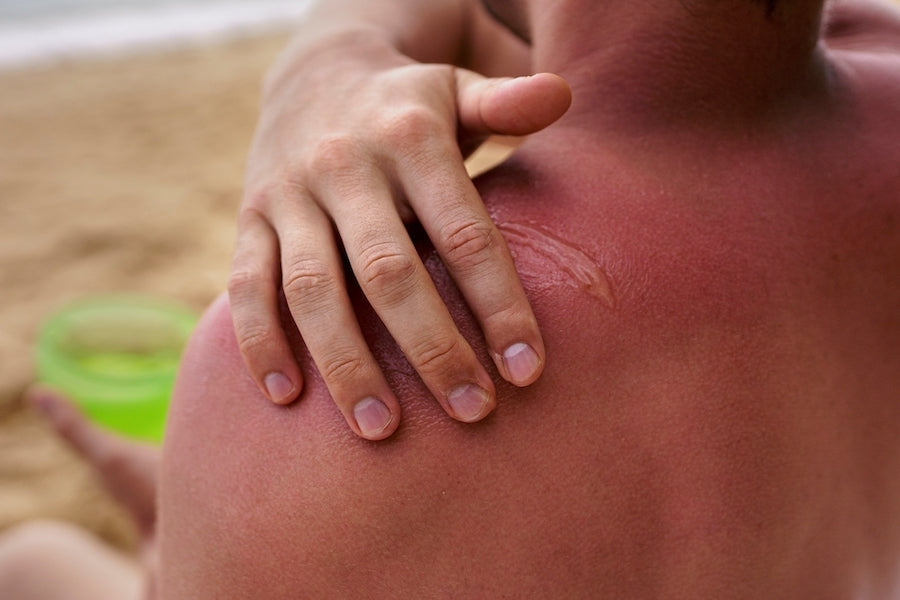
How Much CBD to Take for Pain & Inflammation - Dosage Tips
CBD may have started as a whisper among natural wellness enthusiasts but has since grown into the talk of the town as more people hear about the extensive benefits of this plant extract. Studies suggest it can help with everything from your mood to your complexion, including pain management.
If you are new to the CBD bandwagon, it’s natural that questions would arise. One we hear quite frequently is how much CBD to use for pain and inflammation. To help you use CBD with confidence, we’ll explore dosage suggestions for pain and helpful tips.
General CBD Dosage Insights for Pain Management
There is no agreed-upon rule of thumb on how much CBD to use for relieving pain and related inflammation. Each person responds differently to CBD depending on multiple factors, but don’t feel overwhelmed. We will give you the details so you can get started on what is actually important – reducing your discomfort.
When trying CBD for the first time sublingually (applying drops under the tongue), the best idea is to start with small doses and work your way up. For example, try taking 15mg for your pain and assess how you feel an hour afterward. If you tolerate this dosage well and are still needing further pain-relieving anti-inflammatory benefits, increase the dosage by between 5-10mg the next time you use CBD. On average, a dosage of 40-60mg per day is common for pain relief.
How do I know how much CBD to take sublingually (under the tongue)?
Sublingual CBD use is the best way to provide pain relief to multiple areas at once. With this method, CBD is placed underneath your tongue and held for 30 to 60 seconds before swallowing. This method has one of the highest bioavailability percentages in comparison to other CBD applications because the CBD molecules are sent straight into the bloodstream through the mucous membranes found in the mouth. With sublingual use, your body immediately absorbs the benefits of CBD into the bloodstream through capillaries in your mouth offering almost immediate results that can last up to 4 hours.
Factors to Consider When Adjusting the CBD Dosage
The amount of CBD you should take depends on a lot of variables, including your weight, the severity of pain, your general tolerance of CBD, and the quality of the product you purchase. If you are taking prescription medications, it is important to talk with a doctor before ingesting CBD to make sure it does not interfere.
Our point? There is no golden rule about how much CBD oil you should take for pain and inflammation. While some websites will recommend specific amounts based on your body weight, the truth is that two people both weighing 160 pounds may experience varying levels of effectiveness and pain relief if taking the same CBD dosage. Therefore, it's best to follow our prevous suggestion of starting with smaller amounts and gradually increasing the dose rather than immediately starting with greater quantities based on incomplete generalizations.
Quality Matters When Determining How Much CBD Oil to Take for Pain
Not only are there many types of CBD pain products, but there are also various types of CBD itself… and not all are created equal. By far the most potent form of CBD is full-spectrum due to its minimal processing, enabling other beneficial terpenes to enhance the CBD compound. The end result is the most type of CBD for reducing inflammation, pain and joint issues. In turn, full-spectrum CBD is that it may require a smaller dose than less potent types to achieve the same level of pain relief.
The overall effectiveness of CBD oil is dependent upon the purity of the CBD itself, making it important to shop with trustworthy companies. Reputable CBD brands will provide third-party testing documents specifying exactly what is in each CBD product, including the cannabinoids, THC levels, terpenes, pesticides, and heavy metal content. When you are deciding what ingredients to put in or on your body to eliminate pain, using sustainable CBD-sourced products assures that you are offering your body the safest and most natural treatment available.
How much topical CBD should I use to treat pain?
Your skin naturally contains a high concentration of cannabinoid receptors that topical CBD accesses when absorbed. The binding of CBD with cannabinoid receptors in your epidermal and dermal skin results in the alleviation of pain and inflammation for the applied area.
So which is better for your specific issue - topical and under-the-tongue application? Topical CBD use for pain relief is immediate and effective, such as with tendonitis or bruising. On the other hand, sublingual use is usually more successful when your pain levels are high, and the inflammation is not localized to one small area. The good news is that you don’t necessarily need to limit yourself to one or the other.
Tips for Finding the Right Amount of Topical CBD For Your Pain
When trying to decide how much topical CBD cream or oil to apply, always start by reading the label. High-quality topical CBD products will always provide guidelines on the packaging. For example, every Botanika Life product has a How to Use section, with some even including videos demonstrating the proper application.
As with every skin and health product you purchase, it is vital to choose products with natural, organic ingredients from reputable companies. Start with a small testing spot to make sure your skin does not have any adverse reactions – which are not common – and then increase the dose of application from there.
Are There Risks of Using Too Much CBD for Pain and Inflammation?
There are no known major side effects of CBD usage, even with slightly excessive dosages. It is possible to experience drowsiness, changes in appetite, or digestive issues depending on the dosage and type you use. There’s even less risk of side effects for CBD creams and similar topical products.
However, to further minimize the possibility of an adverse reaction, we suggest being patient as you work your way upward toward the “sweet spot” dosage for your personal pain management.
CBD Pain Products from Botanika Life
Botanika Life is well-known for providing a wide range of products designed to help alleviate pain and inflammation, including oils that can be applied topically or ingested for full-body relief, as well as creams and pain rollers.
Topical Pain Relief from Botanika Life
Ultra-Relief Muscle Pain Rub With CBD - Packing a punch with 1,500 mg of full-spectrum CBD combined with soothing menthol and lidocaine, the Ultra-Relief Muscle Pain Rub provides powerful relief for muscle, joint, and tendon pain.
Pain Relief Roller With CBD, Lidocaine, and Menthol - If you are looking for instant pain relief, the Botanika Life Pain Relief Roller includes lidocaine, menthol, arnica, and 1,000 mg of full-spectrum CBD. The compact size and mess-free application allow you to access pain relief for your aches and pains regardless of where you are.
Super Soothing Pan Serum - Cream With CBD & Lidocaine - This cream consistency makes for easy, versatile application, whether you want to alleviate a bad sunburn or relieve achy joints. For a true treat, combine this cream with our Cryo Ball Massage Roller.
Sublingual or Ingestible Pain Relief from Botanika Life
Elite Elixir - With the potent blend of hemp seed oil and 1500mg of full-spectrum CBD, the Elite Elixir offers not only powerful nourishment for your skin but also the ability to be ingested for full-body relief.
CBD Sleep Spray - Pain doesn't only interrupt your day-to-day functions, but also can disrupt your ability to sleep, especially with conditions like restless leg syndrome. If you're seeking to use CBD to help dull pain to help you get some valuable slumber, a CBD sleep spray may (or may not) be a viable option.
The upsides is that, like an oil, the spray is applied sublingually to maximize the results. What's more, the CBD is joined by other natural sleep aids, like melatonin and magnsium. However, if pain and inflammation management is your primary aim, take note that a sleep spray won't offer as high of a concentration of CBD as the Elite Elixir. Therefore, our CBD sleep spray should be used if the pain is generally mild.

FAQ About CBD Dosage for Pain and Inflammation Management
Can I build up a tolerance to CBD for pain management over time?
While it's uncommon, building a tolerance to CBD for pain management over time is possible. Individual responses vary, with some experiencing reduced effectiveness. Monitoring dosage, taking breaks, and consulting healthcare professionals can help manage tolerance issues effectively.
Can I combine CBD with other pain medications or treatments, and how does this affect dosage?
While no severe interactions were found between CBD and many OTC pain medications like Tylonel and Advil, we still advise proceeding with caution when using both simultaneously, as the body metabolizes both in similar ways. If you do decide to use both simultaneously, talk to your doctor and prepare to potentially take both with lower dosages than you would otherwise.
What does it feel like to have the "right dose" of CBD for pain and inflammation?
To determine if you've achieved the appropriate dose of CBD for your pain, it's important to understand the capabilities and limitations of CBD. While CBD can significantly reduce minor discomforts, it is unlikely to completely eliminate severe pain. Instead, it should be seen as an aid to help dull physical anguish and make pain more manageable. Your ideal CBD dose will achieve this pain-relieving goal without exhibiting any of the previously discussed signs that you may have used CBD in excess.
Can anyone use CBD for pain?
While many people can use CBD for pain relief, it is not suitable for everyone. The primary reason, CBD may not be a good fit is that it has the potential to interact with certain medications. Additionally, the FDA advises againnst pregnant women using CBD products. For these reasons, Botanika Life always advises consulting with your doctor if you have any concerns about the usage (and proper dosing) of CBD for pain.

By Emily Wegener
With a unique background as an Integrative Nutrition Health Coach, Masters Degree in Teaching and experience in Psychology, Emily spends much of her time researching and trying out new holistic healing modalities.



